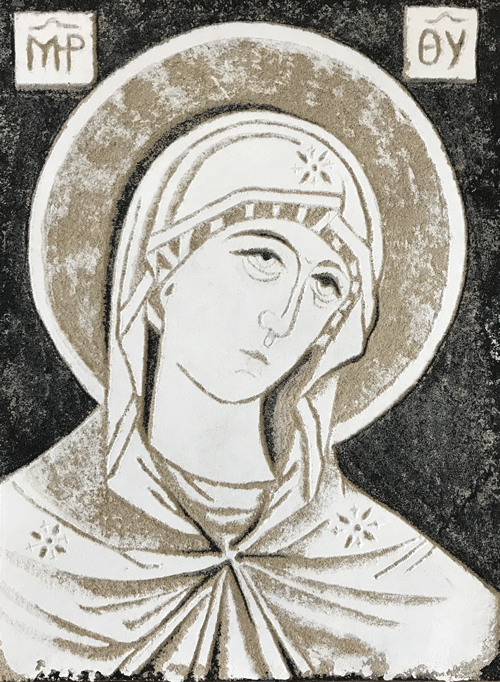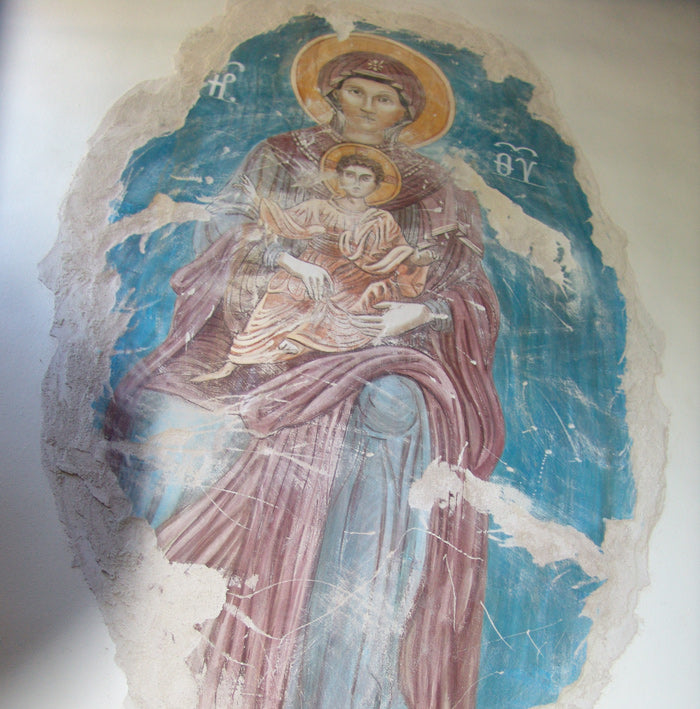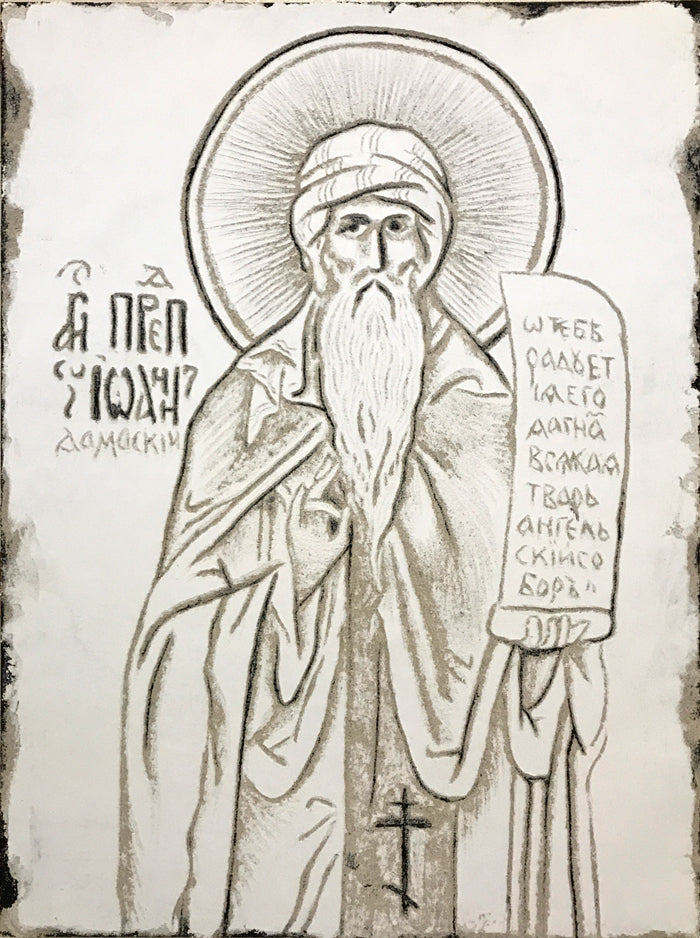The Virgin Mary is the Theotokos, the mother of Jesus Christ, the Son and Word of God. She conceived by the power of the Holy Spirit. She was cared for by her betrothed husband, Joseph, who took the child and his mother into his home as his own. One very strong tradition in the Orthodox Church holds that the birth of Jesus was also miraculous and left Mary's virginity intact as a sign; it is also the tradition of the Church that Joseph and Mary did not have relations after the birth of Jesus. She is also called Panagia, the "All-Holy," indicating her closeness to God in her obedience. (orthodoxwiki.org)
The earliest known prayer to the Theotokos (Greek, Θεοτόκος, meaning “Bearer of God”) is a prayer found on a fragment of papyrus dating back to approximately AD 250.
Beneath thy compassion,
We take refuge,
O Mother of God:
do not despise our petitions in time of trouble,
but rescue us from dangers,
only pure one, only blessed one.
Υπο την σην ευσπλαγχνιαν καταφευγομεν Θεοτοκε. τας ημων ικεσιας μη παριδης εν περιστασει, αλλ’ εκ κινδυνων λυτρωσαι ημας, μονη αγνη, μονη ευλογημενη.
О Пресвятая Владычице Дево Богородице, спаси и сохрани под кровом Твоим моих чад (имена), всех отроков, отроковиц и младенцев, крещеных и безымянных и во чреве матери носимых. Укрой их ризою Твоего материнства, соблюди их в страхе Божием и в послушании родителям, умоли Господа моего и Сына Твоего, да дарует им полезное ко спасению их. Вручаю их Материнскому смотрению Твоему, яко Ты еси Божественный Покров рабам Твоим.
Матерь Божия, введи меня во образ Твоего небеснаго материнства. Уврачуй душевные и телесные раны чад моих (имена), моими грехами нанесенные. Вручаю дитя мое всецело Господу моему Иисусу Христу и Твоему, Пречистая, небесному покровительству. Аминь.
From the Divine Liturgy of St. John Chrysostom:
It is truly meet and right to bless you,
O Theotokos,Ever blessed and most pure, and the Mother of our God.
More honorable than the Cherubim, and more glorious beyond compare than the Seraphim,Without defilement you gave birth to God the Word.
True Theotokos, we magnify you!
From Wikipedia:
Theotokos is an adjectival compound of two Greek words Θεός "God" and τόκος "childbirth, parturition; offspring". A close paraphrase would be "[she] whose offspring is God" or "[she] who gave birth to one who was God". The usual English translation is simply "Mother of God"; Latin uses Deipara or Dei Genitrix.
The Church Slavonic translation is Bogoroditsa (Russian/Serbian/Bulgarian Богородица). The full title of Mary in Slavic Orthodox tradition is Прест҃а́ѧ влⷣчица на́ша бцⷣа и҆ прⷭ҇нод҃ва мр҃і́а (Russian Пресвятая Владычица наша Богородица и Приснодева Мария), from Greek Ὑπεραγία δέσποινα ἡμῶν Θεοτόκος καὶ ἀειπάρθενος Μαρία "Our Most Holy Lady Theotokos and Ever-Virgin Mary". German has the translation Gottesgebärerin (lit. "bearer of God").
"Mother of God" is the literal translation of a distinct title in Greek, Μήτηρ τοῦ Θεοῦ (translit. Mētēr tou Theou), a term which has an established usage of its own in traditional Orthodox and Catholic theological writing, hymnography, and iconography. In an abbreviated form, ΜΡ ΘΥ (М҃Р Ѳ҃Ѵ), it often is found on Eastern icons, where it is used to identify Mary. The Russian term is Матерь Божия (also Богома́терь).
Variant forms are the compounds Θεομήτωρ (translit. Theomētōr; also spelled Θεομήτηρ, translit. Theomētēr) and Μητρόθεος (translit. Mētrotheos), which are found in patristic and liturgical texts.
One of the two earliest known depictions of the Virgin Mary is found in the Catacomb of Priscilla (3rd century) showing the adoration of the Magi. Recent conservation work at the Catacombs of Priscilla revealed that what had been identified for decades as the earliest image of the Virgin and Child was actually a traditional funerary image of a Roman matron; the pointing figure with her, formerly identified as a prophet, was shown to have had its arm position adjusted and the star he was supposedly pointing to was painted in at a later date. The putative Annunciation scene at Priscilla is also now recognized as yet another Roman matron with accompanying figure and not the Virgin Mary. Recently another third-century image of the Virgin Mary was identified at the eastern Syrian site of Dura Europos in the baptistry room of the earliest known Christian Church. The scene shows the Annunciation to the Virgin.
From the Divine Liturgy of St. Basil the Great:
- All of creation rejoices in you, O Full of Grace,
- The assembly of Angels and the race of men.
- O Sanctified Temple and Rational Paradise! O Glory of Virgins!
- From you, God was incarnate and became a child, our God before the ages.
- He made your body into a throne, and your womb He made more spacious than the heavens.
- All of creation rejoices in you, O Full of Grace! Glory to you!



